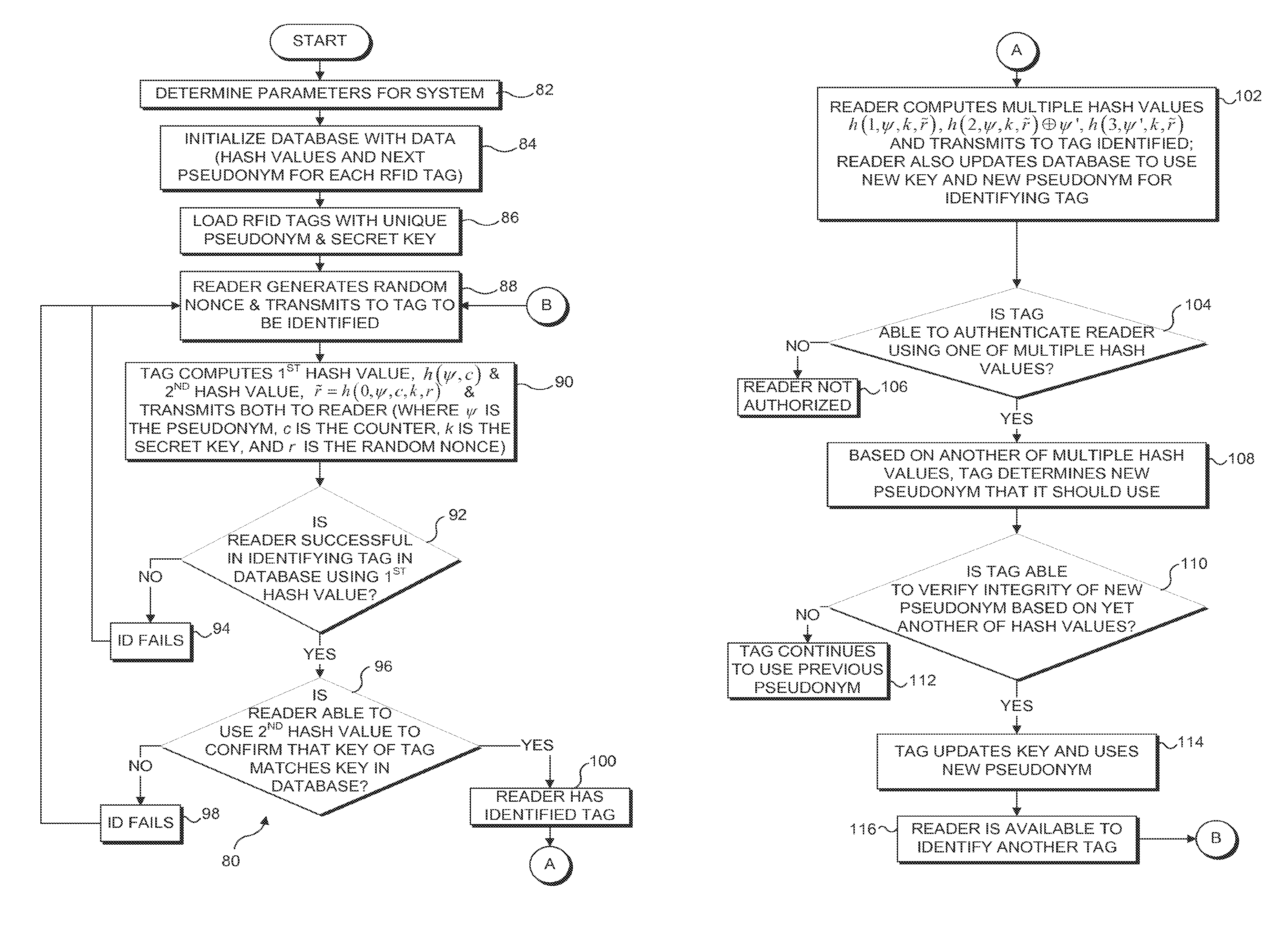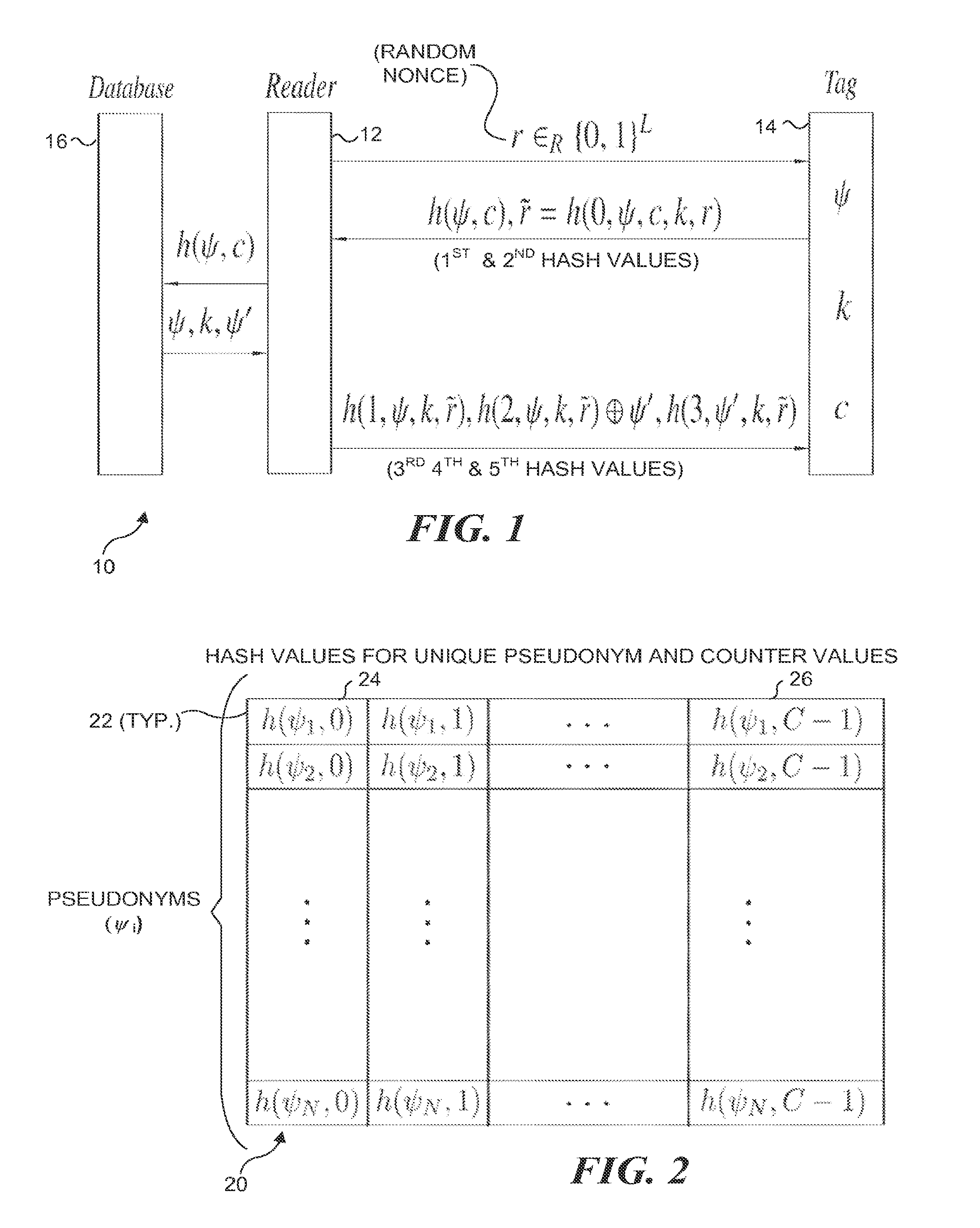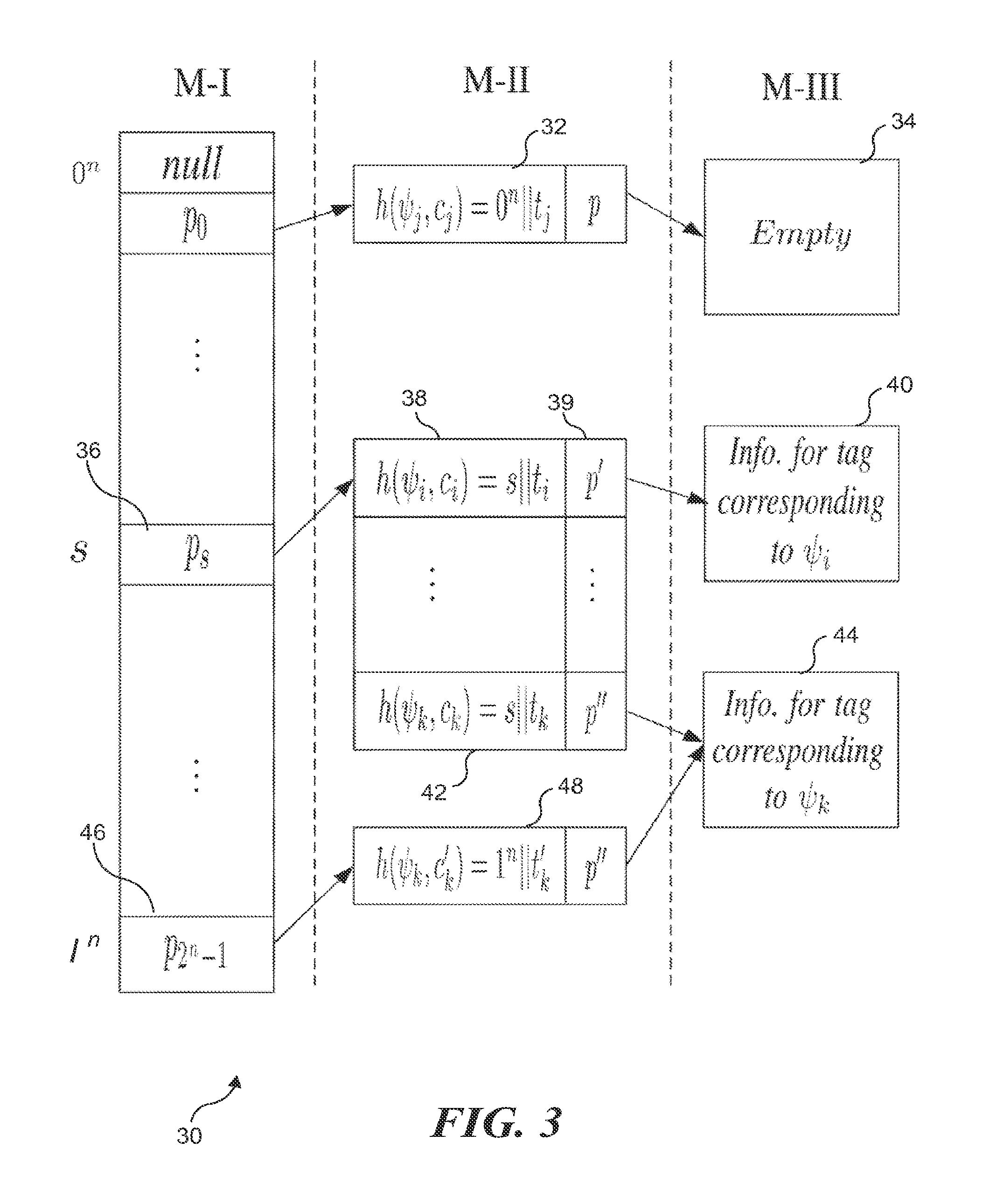Scalable RFID systems: a privacy-preserving protocol with constant-time identification
a privacy-preserving protocol and constant-time identification technology, applied in the field of scalable rfid systems, can solve the problems of limiting the successful commercialization of radio frequency identification systems, the ability to trace rfid tags, and ultimately the individuals carrying them, and a major obstacle to the deployment of rfid systems in real-life applications, so as to reduce the probability of collisions
- Summary
- Abstract
- Description
- Claims
- Application Information
AI Technical Summary
Benefits of technology
Problems solved by technology
Method used
Image
Examples
Embodiment Construction
Figures and Disclosed Embodiments are not Limiting
[0038]Exemplary embodiments are illustrated in referenced Figures of the drawings. It is intended that the embodiments and Figures disclosed herein are to be considered illustrative rather than restrictive. No limitation on the scope of the technology and of the claims that follow is to be imputed to the examples shown in the drawings and discussed herein.
System Model
[0039]RFID systems are typically broken down into three main components: a tag, a reader, and a database. In an exemplary embodiment of the present model, the RFID tag is assumed to have limited computing power: hash computations are the most expensive operations that tags can perform. The reader is a computationally powerful device with the ability to perform sophisticated cryptographic operations. The database is a storage resource at which information about the RFID tags in the system is stored. Communications between readers and the database are assumed to be secure ...
PUM
 Login to View More
Login to View More Abstract
Description
Claims
Application Information
 Login to View More
Login to View More - R&D
- Intellectual Property
- Life Sciences
- Materials
- Tech Scout
- Unparalleled Data Quality
- Higher Quality Content
- 60% Fewer Hallucinations
Browse by: Latest US Patents, China's latest patents, Technical Efficacy Thesaurus, Application Domain, Technology Topic, Popular Technical Reports.
© 2025 PatSnap. All rights reserved.Legal|Privacy policy|Modern Slavery Act Transparency Statement|Sitemap|About US| Contact US: help@patsnap.com



